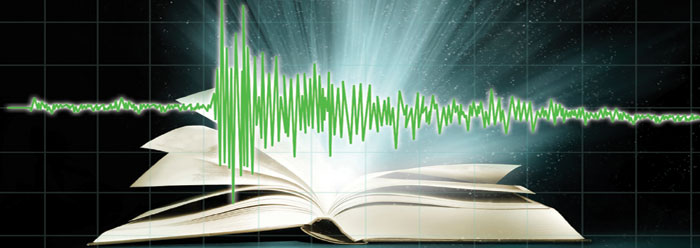
.................................................................................................................................................................
Greatest Earthquakes of the Bible
The
entire story of the Bible can be summarized by its association with earthquakes
- history, archaeology, and geology appear to confirm independently many
earthquakes mentioned in the Bible. The three main purposes for biblical
earthquakes are judgment, deliverance, and communication. The lesson is obvious
— God does not do anything really big without emphasizing it with an
earthquake! In our fast-paced, man-centered, technology-based society of the
twenty-first century, God would have us pause and consider His sovereign nature
and the program He has been accomplishing in the world.
BY
STEVEN A. AUSTIN, PH.D.
The Holy Land is a region where earthquakes
occur frequently.
By one means or another, big earthquakes have
been documented in the Holy Land for a period exceeding 4,000 years.
Many are known from history and literature,
especially the Bible.
Holy Land earthquakes are also evidenced from
archaeological excavations.
No other region of the earth has such a long
and well-documented chronology of big earthquakes.
Recently, geologists have investigated the
4,000-year chronology of earthquake disturbances within the uppermost 19 feet
of laminated sediment of the Dead Sea.
Hypersaline waters preserve seasonally
laminated sediment because organisms cannot live or burrow in the bed of the
lake.
As a result, only a nearby earthquake (or
very large distant earthquake) can homogenize the lake’s uppermost sediment
layers, producing a “mixed layer” devoid of laminations.
A sketch of a sediment core from the west
side of the Dead Sea appears in Figure 1.
The sketch shows the depth of the “mixed
layers” within the laminated sediment sequence.
Two deeper mixed layers in the Dead Sea are
datable from historical, archaeological, and geological associations with
faulting — the earthquakes of 31 B.C. (the Qumran earthquake) and 750 B.C.
(Amos’ earthquake).
Other earthquakes are represented in the Dead
Sea sediment core with dates approximated by assuming a steady rate of
sedimentation.
Consider 17 of the most important earthquakes
that relate to the Bible. The earthquakes are listed in chronological order.
We begin with creation and go through to the
Second Coming of the Lord Jesus Christ.
1. Day Three of Creation Week
On the third day of the creation week, the
waters of the earth were collected into the oceanic basins as continents
appeared (Genesis
1:9-10).
Before Day Three, the waters had been over
the whole earth.
Continents seem to have been uplifted and the
ocean floor was depressed during a great faulting process that established the “foundations
of the earth.”
We are told that angels saw and praised the
omnipotent God as the earth-shaking process occurred (Job 38:4-7; Psalm
148:1-6; possibly Psalm 104:5-6).
Today, the earth’s continental crust (41
percent of the earth’s surface, including the continental shelves) has an
average elevation of 2,000 feet above sea level, whereas the oceanic crust (59
percent of the earth’s surface, excluding the continental shelves) has an
average elevation of 13,000 feet below sea level.
Can anyone properly comprehend the colossal
upheaval that formed continental crust on Day Three? Angels must have watched
in awe!
2. Noah’s Flood
The year-long, global Flood in the days of
Noah was the greatest sedimentary and tectonic event in the history of our
planet since creation (see
Genesis 6-9).
One of the primary physical causes of this
great judgment was the “fountains of the great deep,” all of which were “broken
up” on a single day (Genesis
7:11).
The verb for “broken up” (Hebrew baqa)
means to split or cleave and indicates the faulting process (Numbers 16:31; Psalm
78:15; Isaiah 48:21; Micah 1:4; Zechariah 14:4).
The enormous upheaval (probably associated
with faulting of seafloor springs) unleashed a year-long global flood.
God’s purpose was to begin the human race
again from the family of Noah.
3. Destruction of Sodom and Gomorrah
A disaster called an “overthrow” was
delivered in about 2050 B.C. on the cities of Sodom and Gomorrah (Genesis 19:24-28).
That event was so spectacular, swift, and
complete that it became proverbial for the severity of judgment that God’s
righteous anger could deliver.
Jesus spoke “woes” exceeding those
spoken against Sodom and Gomorrah on Galilean cities that rejected His teaching
(Matthew
10:15; 11:23-24; Luke 10:12).
The swiftness of Sodom’s judgment was used by
Jesus to illustrate how sudden His return will be (Luke 17:28-30).
Of the five “cities of the plain” (Genesis 13:12; 14:8), only Zoar is
described as surviving the catastrophe. Zoar is the site to which Lot and his
family fled with the approval of the angels (Genesis 19:20-23).
As a city, it flourished through the time of
Moses and the kings of Israel, even being described as a city of the region of
Moab by the prophets.
Arab historians in the Middle Ages refer to
Zoar and identify the city as modern Safi southeast of the Dead Sea in Jordan.
Because Lot and his family made the journey
by foot in just a few hours (Genesis 19:15, 23), Sodom must be less than about 20 miles from
Zoar (modern Safi).
Two Early Bronze Age archaeological sites
southeast of the Dead Sea (Bab edh-Dhra and Numeira) reveal evidence of
catastrophic collapse and burning along the eastern border fault of the Dead
Sea Transform Fault.
These two sites are likely the remains of
Sodom and Gomorrah.
A thick disturbed zone within the Dead Sea
sediment core, assignable to the Sodom and Gomorrah event, occurs at a depth of
about 18.5 feet.
4. Moses on Sinai
Before God spoke to Moses on Mount Sinai and
gave the Ten Commandments, a great shaking of the mountain occurred (Exodus 19:18).
No doubt the earthquake prepared both Moses
and Israel for the important truths the Lord was going to communicate.
This awesome shaking event continues to be
remembered in the New Testament as the context for God’s delivery of His Law (Hebrews 12:18-21).
5. Korah’s Rebellion in the Wilderness
A crisis of leadership developed among the
children of Israel in the wilderness (Numbers 16:1-40).
Korah and all his men were killed and their
possessions taken, as the land on which they were camped split apart and closed
back upon them (Numbers
16:31-33).
God destroyed them because they rebelled
against Him.
6. The Fall of Jericho
The wall of the fortified city of Jericho
collapsed suddenly after the Israelites marched around the city seven times (Joshua 6).
The biblical account does not specifically
mention an earthquake, but the earth would have been shaken by the wall’s
collapse.
Archaeological excavations at Jericho confirm
that the massive wall made of mud bricks did collapse at the time of the
conquest, about 1400 B.C.
The site of the ancient city of Jericho sits
directly on top of a very large fault associated with the Jordan Rift Valley.
Surprisingly, the Dead Sea sediment core has
a distinctive mixed sediment layer at a depth of 15.1 feet that is evidence of
a big earthquake at about 1400 B.C.
7. Philistine Camp near Geba
Israel conquered the Philistines near Geba
after an earthquake occurred in their camp (1 Samuel 14:15).
Jonathan and his armor bearer were separated
from their army and would otherwise have been killed by the Philistines.
Is this event at 1010 B.C. seen in the
thinner “mixed layer” within the Dead Sea sediment core at a depth of 13.5
feet?
8. Elijah on Mount Horeb
God spoke to Elijah at Mount Sinai (Horeb) as
He did before to Moses after the occurrence of an earthquake (1 Kings 19:11).
Elijah, who had been hiding in a cave,
realized that the Lord does not need to use a mighty earthquake to speak, but can,
in His meekness, reveal Himself simply in a “still, small voice.”
9. Amos’ Earthquake of 750 B.C.
The prophet Amos predicted the “Day of the
Lord” (Amos 5:18-20) and a great earthquake (Amos 51:1; 2:13;
3:14-15; 6:11; 8:8; 9:1, 5).
When the magnitude 8.2 earthquake occurred
two years later in 750 B.C., Amos was propelled to notoriety as the earliest
writing prophet at the time of the explosive emergence in Israel of writing
prophets.
Other prophets that lived through the big
earthquake wrote about “the Day of the Lord” and earthquakes (Isaiah 2:10-21; 5:25;
Micah 1:3-6).
Archaeological excavations at numerous Iron
Age cities show earthquake destruction debris at layers assigned to the middle
of the eighth century B.C.
Dead Sea sediment cores indicate a persistent,
two-inch-thick earthquake-disturbed layer at a depth of about 12 feet in the
floor of the lake.
Analysis of the damage regionally indicates
Richter magnitude 8.2 with the epicenter in Lebanon.
That makes Amos’ earthquake the largest yet
documented in the Holy Land in the last 4,000 years.
10. Qumran Earthquake of 31 B.C.
About sixty years before the ministry of
Christ, a small group of Levites copied Scripture onto scrolls at the small
village of Qumran in the desert northwest of the Dead Sea.
In 31 B.C., a large earthquake occurred along
the Jericho Fault on the western side of the Dead Sea.
The earthquake dried up Qumran’s main spring
and severely cracked the architecture.
Spectacular evidence of the earthquake is
seen at recent excavations at Qumran in cracked stair steps within the ritual
baths.
Grooved fault surfaces (what geologists call
“slickensides”) and ground rupture within lake sediment can be observed just
south of Qumran.
Josephus wrote of the regional devastation
from the earthquake, and he said 30,000 men perished.
The survivors buried the Dead Sea Scrolls and
Qumran lay abandoned after the earthquake.
The Bible, of course, is completely silent
concerning this earthquake and other events during the intertestamental period.
No doubt, everyone in New Testament times
knew of ancestors killed in that event.
11. The
Crucifixion in Jerusalem, April 3, 33 A.D.
After three hours of darkness at midday on
April 3, 33 A.D., the Lord Jesus exclaimed the words “It is finished!” as
He died on the cross.
Immediately, the curtain of the sanctuary of
the temple was torn, a great earthquake occurred, rocks were broken, and many
dead saints were resurrected from their tombs (Matthew 27:51-54).
The earthquake upon the death of Christ
called attention to the great salvation that had been accomplished that day on
the cross.
The barrier between God and man was not
removed by the earthquake tearing the Temple’s veil, but by His Son being
offered as “the Lamb of God” for the sin of the world.
The centurion and his soldiers, who were
given the task of crucifying the Lord Jesus, saw the sky grow dark at noon,
followed by the earthquake as Christ died at 3:00 p.m.
They recognized that Jesus was indeed the Son
of God.
An outcrop of laminated Dead Sea sediment can
be seen at Wadi Ze’elim above the southwestern shore of the modern Dead Sea
near the fortress of Masada.
In this sediment outcrop is a distinctive
one-foot thick “mixed layer” of sediment that is tied strongly to the Qumran
earthquake’s onshore ground ruptures of 31 B.C. (see Figure 2).
Thirteen inches above the 31 B.C. event bed
is another distinctive “mixed layer” less than one inch thick.
The sedimentation rate puts this second
earthquake about 65 years after the 31 B.C. earthquake.
It seems that the crucifixion earthquake of
33 A.D. was magnitude 5.5, leaving direct physical evidence in a thin layer of
disturbed sediment from the Dead Sea.
12. The
Resurrection in Jerusalem, April 5, 33 A.D.
No human agency rolled away the stone
blocking the opening of our Lord’s tomb (Matthew 28:2).
It was the earthquake in the presence of the
angel.
God’s sovereign action was obvious in both
the earthquake and in our Lord’s resurrection.
The purpose of the stone being rolled away
was not to permit the resurrected body of Jesus to exit.
The purpose was to allow people to see that
the tomb was empty!
13. Jerusalem
Prayer Meeting, Summer 33 A.D.
Following the day of Pentecost, the assembled
church in Jerusalem received the report of threats and persecution from the
Jewish leaders.
That compelled them to pray that the outreach
of His servants and the spread of the Gospel would continue.
After the prayer, the place where they were
gathered was shaken by an earthquake as believers spoke boldly (Acts 4:31).
14. The Prison at Philippi
An earthquake not only released Paul and
Silas from the Philippi prison (Acts 16:26), but it authenticated their testimony.
The jailer who witnessed the event recognized
the Lord’s hand and believed in the Lord Jesus Christ.
That earthquake draws our attention to how
God was using His apostles to minister in the early days of the church.
15. Today’s Earthquakes
When Jesus was asked by His disciples what
the sign of His coming would be, He talked of wars, famine, epidemic disease,
and earthquakes.
Jesus said, “These are the beginning of
sorrows” (Matthew
24:8; Mark 13:8; cf. Luke 21:10-11).
The word “sorrows” is the Greek word
meaning “birth pangs.”
Seismograph analysis reveals that the
frequency and energy of large earthquakes was not constant throughout the
twentieth century.
According to a popular urban legend, big
earthquakes have been increasing in both frequency and energy.
This legend is not supported by the
seismograph data.
There appears to be about a 30-year cycle of
increasing and decreasing earthquake frequency, suggesting the “beginning of
birth pangs” theme.
Furthermore, seismographs demonstrate that
earthquakes are indeed distributed throughout the globe (the “divers places”
as described by Jesus in Matthew 24:7 and Mark 13:8).
16. Gog’s Future Earthquake in Israel
Ezekiel 38 and 39 describe a
northern confederacy of nations, commanded by a leader called Gog, that invades
the land of Israel.
A supernaturally directed natural disaster of
colossal scale will occur (earthquake, slope failure, mountains overturned,
dwellings collapse, rain of hailstones, rain of burning sulfur, and plague).
This colossal disaster will result in the
destruction of the invading armies (Ezekiel 38:18-23), in God’s greatness
and holiness being seen in the sight of the nations (Ezekiel 38:23), and in the national
conversion of Israel back to her sovereign Lord (Ezekiel 39:25-29).
Gog’s earthquake occurs after Israel has been
dwelling in the land in perceived “safety” (Ezekiel 38:8; 39:26) upon the northern
confederacy’s unexpected invasion, whereas “Messiah’s earthquake” (Revelation 16:16-20) occurs after Israel
has been afflicted with judgments at the site where “the kings of the earth
and of the whole world” are gathered for battle (Revelation 16:14,
16).
17. Messiah’s Earthquake in the Future
The apostle John wrote of a “great
earthquake” in the future associated with the opening of the “sixth
seal” (Revelation
6:12).
This earthquake will be the precursor to the
greatest earthquake since men have been on the earth.
This greatest earthquake will occur in
association with the “seventh bowl” at a place called Armageddon (Revelation 16:16-20).
This future “Armageddon earthquake” or
“Messiah’s earthquake” will be associated with the return of Christ to
Jerusalem (Acts
1:9-11; Zechariah 14:1-11) and is described as inflicting severe topographic and
geologic changes on a global scale.
Scripture appears to look forward to the
monumental changes associated with this future earthquake (e.g., Psalm 46).
After God’s voice shakes the earth mightily (Haggai 2:6, 7, 21,
22; Hebrews 12:26)
and fully accomplishes these extraordinary geologic changes, His saints will
receive a “kingdom which cannot be moved” (Hebrews 12:27-29).
Conclusion
Biblical events
emphasized by earthquakes are creation, Noah’s Flood, separation of Abraham and
Lot from judgment of the wicked cities, the giving of the Law on Mount Sinai,
authentication of the leadership of Moses, God’s provision in the conquest of
Canaan, vindication of the messages of Hebrew prophets, the crucifixion of our
Lord in Jerusalem, the resurrection of our Lord, the ministry of the apostles
and the church, the modern “birth pangs” sign of the end times, the
national conversion of Israel, and the Second Coming of the Lord Jesus Christ.
History, archaeology,
and geology appear to confirm independently many earthquakes mentioned in the
Bible.
Earthquakes have been used distinctively by
God to highlight some of the most important events of the Bible.
The three main purposes for biblical
earthquakes are judgment, deliverance, and communication.
The lesson is obvious — God does not do
anything really big without emphasizing it with an earthquake!
In our fast-paced, man-centered,
technology-based society of the twenty-first century, God would have us pause
and consider His sovereign nature and the program He has been accomplishing in
the world.
Dr.
Austin is Senior Research Geologist, Logos Research Associates, Santa Ana, CA.

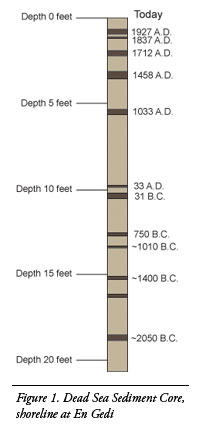
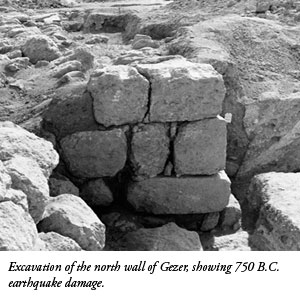
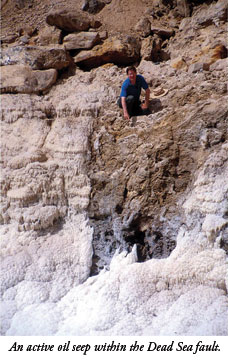
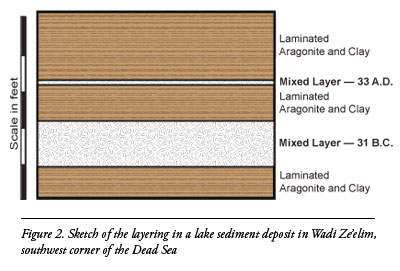
No comments:
Post a Comment